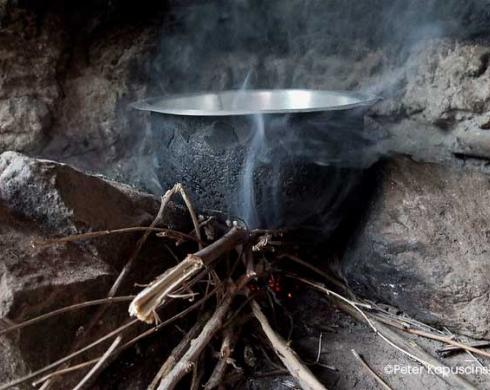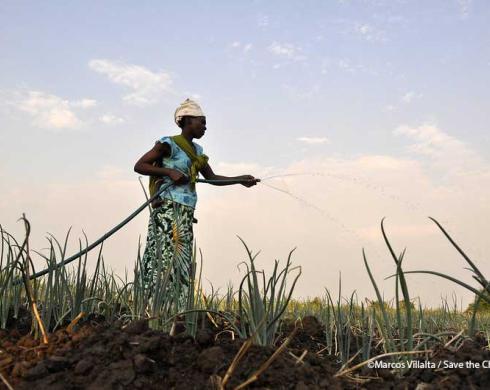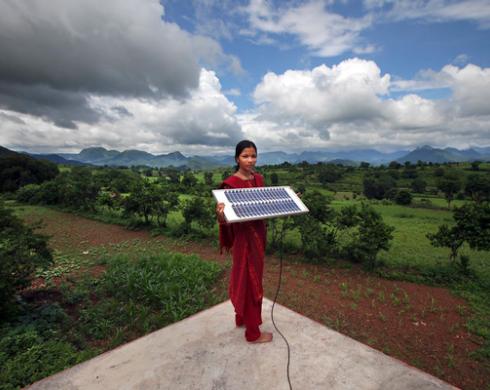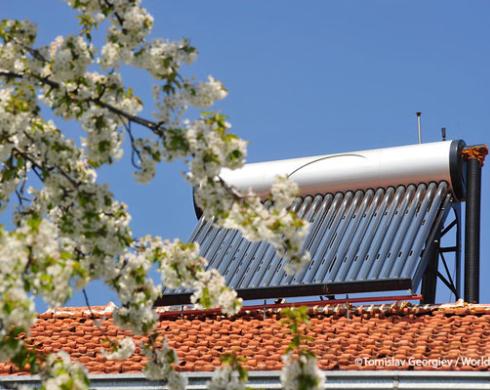Mitigating and Adapting to Climate Change
With more than three billion people living in contexts that are highly vulnerable to climate change (IPCC Report 2023), mitigation and adaptation strategies are essential to minimize the long-term effects of climate warming. 3ie’s climate change research program focuses on promoting evidence-informed policies and programs to strengthen climate mitigation and adaptation efforts.
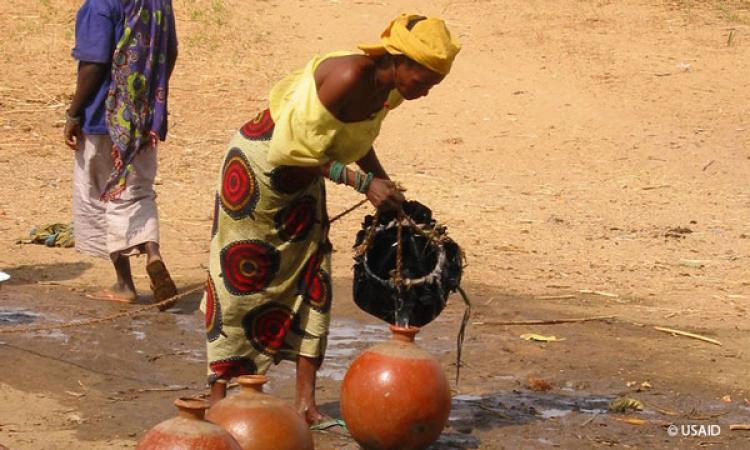
Overview
Widespread and rapid climate change is harming biodiversity and, with its effects on human health and livelihoods, slowing progress towards Sustainable Development Goals, according to the Sixth Assessment Report of the IPCC launched in 2023. The impacts of climate change on ecosystems, resources, and food security are exacerbating social and economic vulnerabilities, especially of the most marginalized groups and countries. In 2021, the World Meteorological Organization estimated that 60% of economic losses and 90% of deaths due to extreme weather events and natural disasters since the 1970s occurred in low- and middle-income countries.
With clear evidence of a narrowing window for tackling the climate crisis, the case for evidence-informed action could not be stronger. We do not have time to waste on programs that are not effective. Instead, we need a concerted effort to test and adapt programs to identify solutions with potential for large, transformational effects, both on climate change mitigation, and in developing people’s resilience to withstand the changes in the climate that are already unavoidable.
As part of our climate change evidence program, identifying effective strategies to fight climate change through evidence synthesis and evaluation and promoting their use are among 3ie's top priorities. Our partnerships and projects (see below) as part of the climate change evidence program cover the three key areas of nature-based solutions, sustainable energy and resilience.
Synthesis and mapping
In recent years, we have supported and produced evidence on various aspects of climate change. Our evidence gap maps (EGMs) provide insight into where evidence already exists, and where gaps remain. Where evidence exists, our synthesis work helps review various strategies and programs to draw lessons on what works and what does not. Here’s a summary of our recent work:
Evidence mapping for climate change and biodiversity interventions
Climate change has caused widespread, but unequally distributed, loss and damage to nature and human welfare. Governments and private sector are acting to address the continuing impacts of climate change and move towards more climate-resilient development pathways, with annual climate finance flows in 2021 topping USD800 billion and reaching all-time highs as per preliminary estimates from the Climate Policy Initiative.
To support decision makers in finding relevant evidence around a range of climate action options theorized to influence outcomes like environment and biodiversity loss mitigation and adaptation for human welfare, 3ie, with support from the UK government’s Department of Environment, Food and Rural Affairs (DEFRA) has updated 3ie’s 2016 Land Use Change and Forestry Programs Evidence Gap Map (EGM) and developed a framework to map the evidence targeting climate change and biodiversity in low- and middle-income countries (L&MICs). Based on this framework, we are producing an EGM that identifies and maps the studies focusing on climate change and biodiversity interventions.
View project page | View the updated Land Use EGM | Read EGM report | Read working paper
Sustainable energy for all evidence gap map
Sustainable energy is recognized as an area of potential synergies between climate action and human development and the International Energy Agency projects more than USD100 trillion being invested into energy infrastructure by 2050 (IEA, 2021). The potential for win-win solutions, the large investments made towards the energy sector, along with the dramatic effects of climate change, have led to the need to better understand what sustainable energy interventions work and what evidence on effectiveness is available.
To provide a clear overview of the state of the evidence on electrification, renewables and energy efficiency, the three pillars of Sustainable Development Goal 7 (Access to clean and affordable energy for all), SEforALL and 3ie have co-produced an evidence gap map (EGM) to (a) identify and describe the characteristics of evaluations and reviews measuring the effects of sustainable energy interventions on environmental and welfare outcomes in L&MICs, and (b) identify evidence gaps to prioritize research investment.
View Project page | Read EGM blog | Read EGM report | View interactive EGM | Read the protocol
Understanding impacts of El Niño and the Indian Ocean Dipole in the Indo-Pacific
With support from FCDO’s Research Commissioning Centre, 3ie is examining the evidence of the effects of El Niño and the positive Indian Ocean Dipole on health, economics, conflict, migration, and food security across low- and middle-income countries in the Indo-Pacific region. Our findings will inform policy discussions and future FCDO policy and action, including departmental planning, diplomacy and response across key sectors regarding the current 2023 El Niño, future impacts from similar seasonal climate drivers (La Niña, Indian Ocean Dipole), as well as near-term climate security implications.
View project page | Read protocol | Read blog | Read brief
Evidence for agriculture-led growth, nutrition-sensitive agriculture, and resilience
Chronic vulnerability, hunger, and water insecurity have been compounded by climate change, humanitarian crises, and shocks and pressures induced by the COVID-19 pandemic. USAID, through the Bureau for Resilience and Food Security (RFS), works through dedicated centers to improve program impacts on these critical issues and accelerate the progress on building resilient communities and countries. To strengthen this work under the RFS Evidence Aggregation for Programmatic Approaches Project (REAPER), 3ie in collaboration with technical partners at the Massachusetts Institute of Technology (MIT) and University of Notre Dame mapped the existing evidence and gaps in four areas: resilience, agriculture-led growth, nutrition-sensitive agriculture and water security, sanitation, and hygiene (WASH).
Mapping energy efficiency interventions

Energy consumption is the largest source of global green house gas emissions (GHGs), and energy efficiency has great potential to reduce energy demand and use. In the last decade, the number of studies evaluating the effectiveness of energy efficiency projects has increased, but some areas are studied more than others. To understand what evidence (and gaps) exist, 3ie produced an EGM focusing on studies between 2000-2019. We identified nearly 300 studies that primarily address 15 types of interventions in three policy areas: (1) financial assistance and market enabling measures; (2) information programs; (3) technical capacity development.
We found clusters of evidence exist on interventions that focus on the introduction of systems to monitor energy consumption (66 studies), the direct provision of technologies and services (53 studies), and the implementation of education campaigns to raise awareness (40 studies). However, there are several interventions that had limited or few studies such as capacity building to develop energy efficiency skills, and technical assistance to those who want to switch to efficient technologies, among others. It is also worth noting that while the evidence is growing, there are few studies in Africa, Asia and South America. In fact, almost 75 per cent of the studies in our map look at interventions in high-income countries.
Residential energy efficiency interventions
Our map identified a synthesis gap on interventions that address energy efficiency at the household level. This is important because the residential sector releases around 17 percent of global GHGs and improving energy consumption at home can help mitigate climate change. To understand what interventions work, our systematic review includes 16 studies on the impact of installing technology in residential settings. While we found promising effects on reducing energy consumption, evidence on interventions from L&MICs was limited. To better understand the effects of technology in real-world settings, more evidence is urgently needed.
Read plain language summary | Read report | Read blog
Incentives for climate mitigation in the land use sector – the effects of payment for environmental services
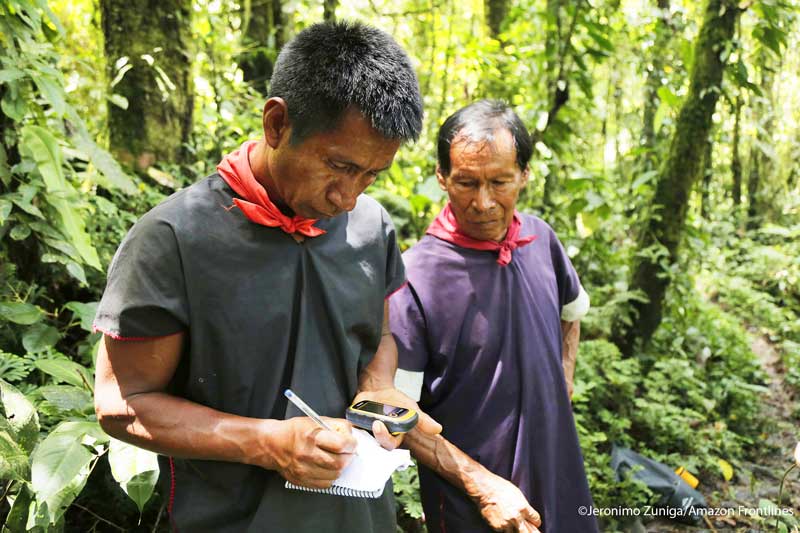
Payment for environmental services (PES) programs have been promoted as a measure to mitigate the effects of climate change in the land use sector. But key policy questions around the effectiveness of PES on both environmental and socio-economic outcomes remain unanswered. We conducted a systematic review, which included 44 impact evaluation studies of 18 different PES programs, and a further 60 studies for the qualitative thematic synthesis. Despite the large number of studies, we were unable to determine with any certainty whether PES programs are worthwhile investments. The overall evidence is of low or very low quality, and the outcomes measurements sometimes missing or are too different to allow for a meta-analysis. This highlights the urgent need for higher quality impact evaluations which include a counterfactual to evaluate the effectiveness of these interventions.
Effects of decentralized forest management on deforestation and poverty
Reforestation and forest management can be key to mitigate the effects of climate change. This systematic review looks at the effects of decentralized forest management on deforestation and poverty in L&MICs. We included eight studies on programs from seven countries. While we found positive effects on reducing deforestation, there were no effects on human welfare and poverty outcomes.
Evaluations
We have supported several impact evaluations that can provide insight into the effects of interventions aimed at mitigating climate change at the national level. Below is a list of some of our relevant work:
Geospatial Impact Evaluation of an Agricultural Intensification Program in Niger
Climate change is exacerbating food insecurity around the world, particularly in drought-prone areas that are already highly vulnerable, such as the Sahel region of West Africa. To improve food security and resilience, the government of Niger, with funding from the West African Development Bank (BOAD), implemented a multi-faceted agricultural production intensification program (PIPA/SA). Since the intervention areas are remote and hard to survey, BOAD commissioned 3ie and New Light Technologies to use remotely sensed data to analyze various program outcomes, including changes in production, water availability, siltation and desertification. This study used geospatial data and a synthetic difference-in-difference design to measure the impact of this program. A preliminary descriptive analysis has been published, and initial results were presented in a session at the 2023 GeoField Convening in Rome. (Read more about our work on innovations in data for impact evaluation)
Cash or carbon: A randomized trial of payments for ecosystem services to reduce deforestation
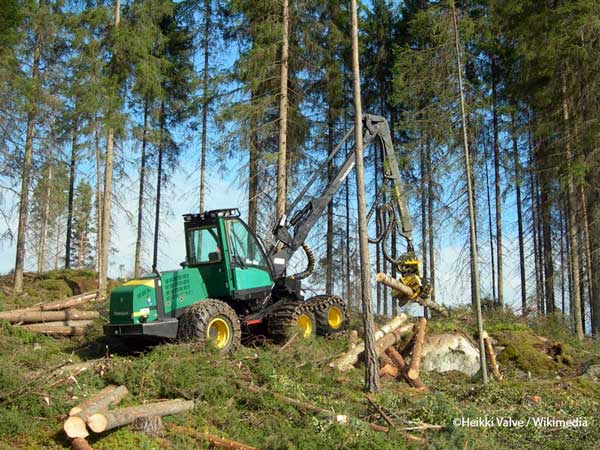 Deforestation is the second largest source of carbon emissions and curbing it can help mitigate climate change. To address deforestation, some low- and middle-income countries designed interventions to provide financial incentives — known as Payments for Ecosystem Services — for forest-owning individuals or communities to keep their forests intact. In 2017, 3ie supported the first randomized controlled trial of such an intervention in Uganda. The intervention offered payments to private forest owners in Western Uganda if they refrained from clearing trees. To understand the impact of the program, evaluators used satellite imagery to examine the forest cover in both treatment and control villages. They found that the project significantly reduced deforestation.
Deforestation is the second largest source of carbon emissions and curbing it can help mitigate climate change. To address deforestation, some low- and middle-income countries designed interventions to provide financial incentives — known as Payments for Ecosystem Services — for forest-owning individuals or communities to keep their forests intact. In 2017, 3ie supported the first randomized controlled trial of such an intervention in Uganda. The intervention offered payments to private forest owners in Western Uganda if they refrained from clearing trees. To understand the impact of the program, evaluators used satellite imagery to examine the forest cover in both treatment and control villages. They found that the project significantly reduced deforestation.
The findings of this evaluation were used by conservation organizations to inform a review of Uganda’s environmental policies and prompted greater collaboration among different conservation groups. Read more about the impact of this evaluation on 3ie’s evidence impact summaries portal.
A triple win? The impact of Tanzania’s Joint Forest Management program on livelihoods, governance and forests
An impact evaluation on Tanzania’s Joint Forest Management (JFM) program found strong positive impact on strengthening local governance. However, no effects were found on livelihoods or change in the deforestation rate. There are some indications of potential improvements on subsistence forest product harvesting, and on potential households harvesting behavior change due to JFM’s stricter protection and more effective patrols.
Community monitoring of socio-environmental liabilities with advanced technologies in the Ecuadorian and Peruvian Amazon

We supported an evaluation to understand the impact of a user-friendly, technology-enabled community intervention to enhance communities’ detection, monitoring and reporting capabilities. The study also assessed the community’s ability to make socio-environmental claims that result in adequate compensation.
Picture-based crop insurance: using farmers’ smartphone pictures to strengthen resilience
With farmers in India increasingly exposed to climate change and natural disasters, policymakers are seeking ways to improve farmers’ resilience, and delivery of risk management strategies, including crop insurance. In India, Haryana and Punjab are the second and third largest wheat-producing states and the largest contributors to the central pool of food grains used to provide welfare entitlements to the country's poor. Our quantitative study with more than 700 farmers from 50 villages in six districts in the two states assessed the feasibility of offering pictured-based insurance. We find that farmers perceive most hazard to be visible from smartphone pictures and 80 percent of them uploaded at least one valid picture during the season.
More work
Forest and land conservation

- Examining the evidence base for forest conservation interventions (2016)
- Land-use change and forestry programmes: evidence on the effects on greenhouse gas emissions and food security
- Parks Versus PES: Evaluating Direct and Incentive-Based Land Conservation in Mexico
- Impacts of payments for ecosystem services programme in Mexico
Energy
- What Impedes Efficient Adoption of Products? Evidence From Randomized Sales Offers For Fuel-Efficient Cookstoves In Uganda
- Impact of alternate wetting and drying on farm incomes and water savings in Bangladesh
- Continuous Emissions Monitoring Systems (CEMS) in India
- Participatory videos to teach the use of renewable energy systems. A case study from rural Nepal
Community involvement in environmental decisions
- Community monitoring of socio-environmental liabilities with advanced technologies: Evidence from a randomized control trial in the Ecuadorian and Peruvian Amazon
- How should Tanzania use its natural gas? Citizens' views from a nationwide Deliberative Poll
Other topics
- Measuring impacts of conservation interventions on human well-being and the environment in Northern Cambodia
- The Impact Of Earned And Windfall Cash Transfers On Livelihoods And Conservation In Sierra Leone
- What Impedes Efficient Adoption of Products? Evidence From Randomized Sales Offers For Fuel-Efficient Cookstoves In Uganda
